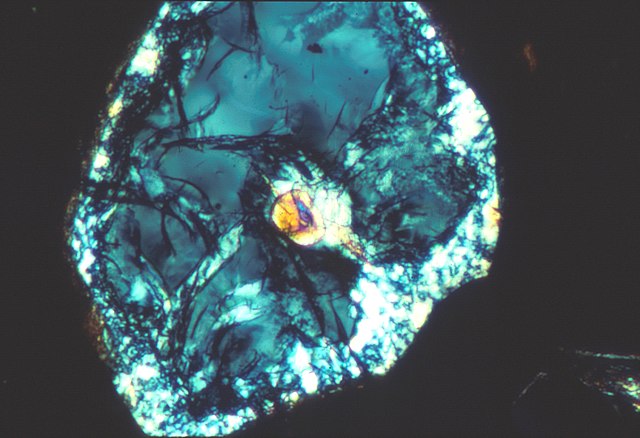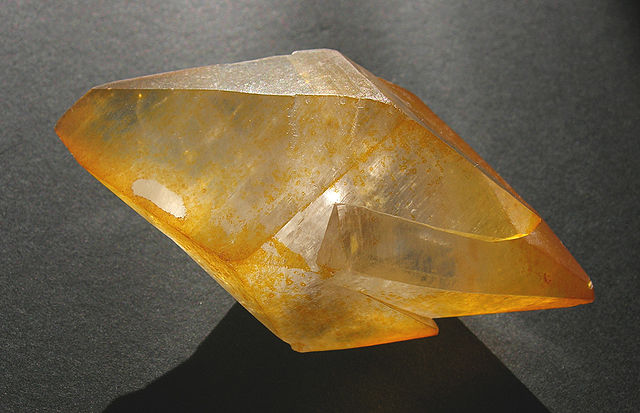Coesite is a form (polymorph) of silicon dioxide (SiO2) that is formed when very high pressure (2–3 gigapascals), and moderately high temperature (700 °C, 1,300 °F), are applied to quartz. Coesite was first synthesized by Loring Coes, Jr., a chemist at the Norton Company, in 1953.
Crossed-polars image of coesite grain (gray) ~1 mm across in eclogite. Small, colored inclusion is pyroxene. Polycrystalline rim is quartz.
In crystallography, polymorphism describes the phenomenon where a compound or element can crystallize into more than one crystal structure. The preceding definition has evolved over many years and is still under discussion today. Discussion of the defining characteristics of polymorphism involves distinguishing among types of transitions and structural changes occurring in polymorphism versus those in other phenomena.

Solid phase transitions which transform reversibly without passing through the liquid or gaseous phases are called enantiotropic. In contrast, if the modifications are not convertible under these conditions, the system is monotropic. Experimental data are used to differentiate between enantiotropic and monotropic transitions and energy/temperature semi-quantitative diagrams can be drawn by applying several rules, principally the heat-of-transition rule, the heat-of-fusion rule and the density rule. These rules enable the deduction of the relative positions of the H and Gisobars in the E/T diagram. [1]
Image: Calcite jaune
Image: Aragonite 2 Enguidanos




